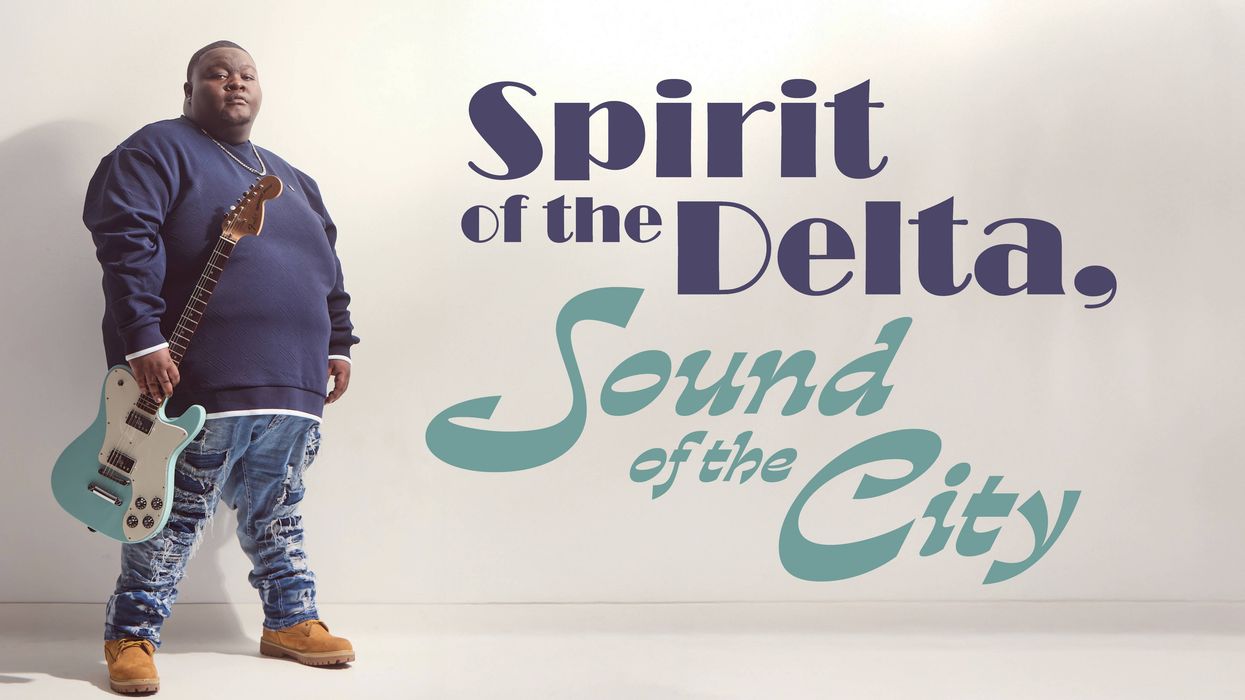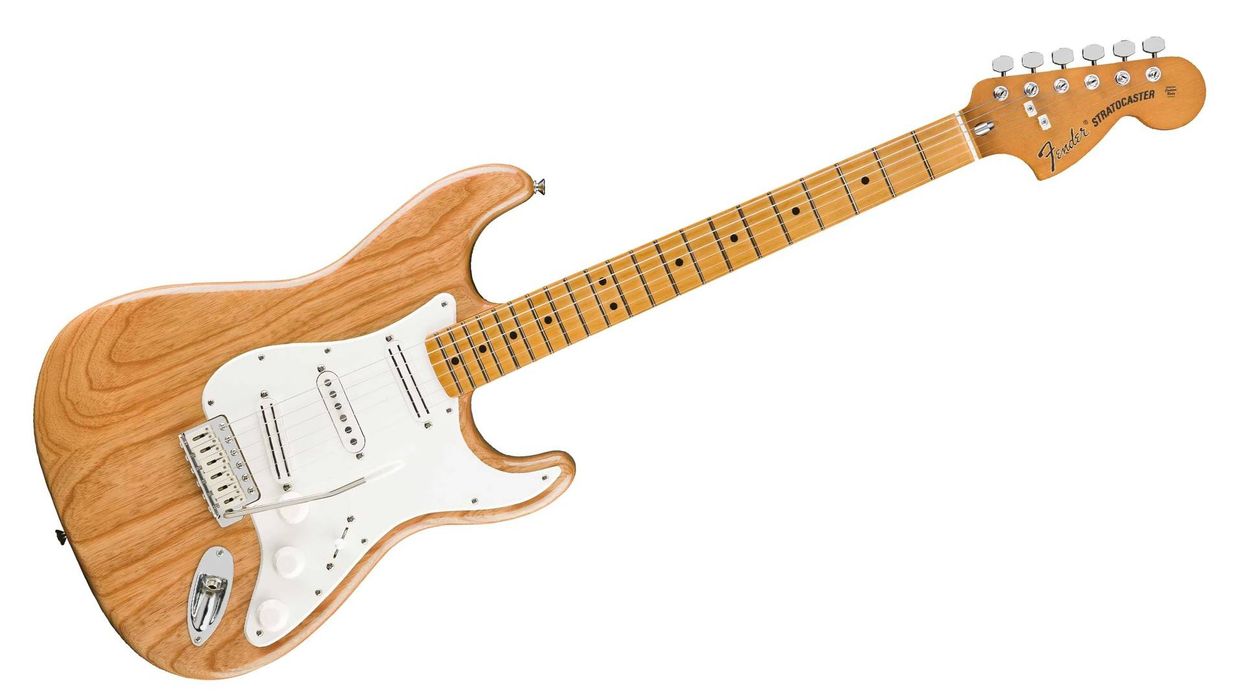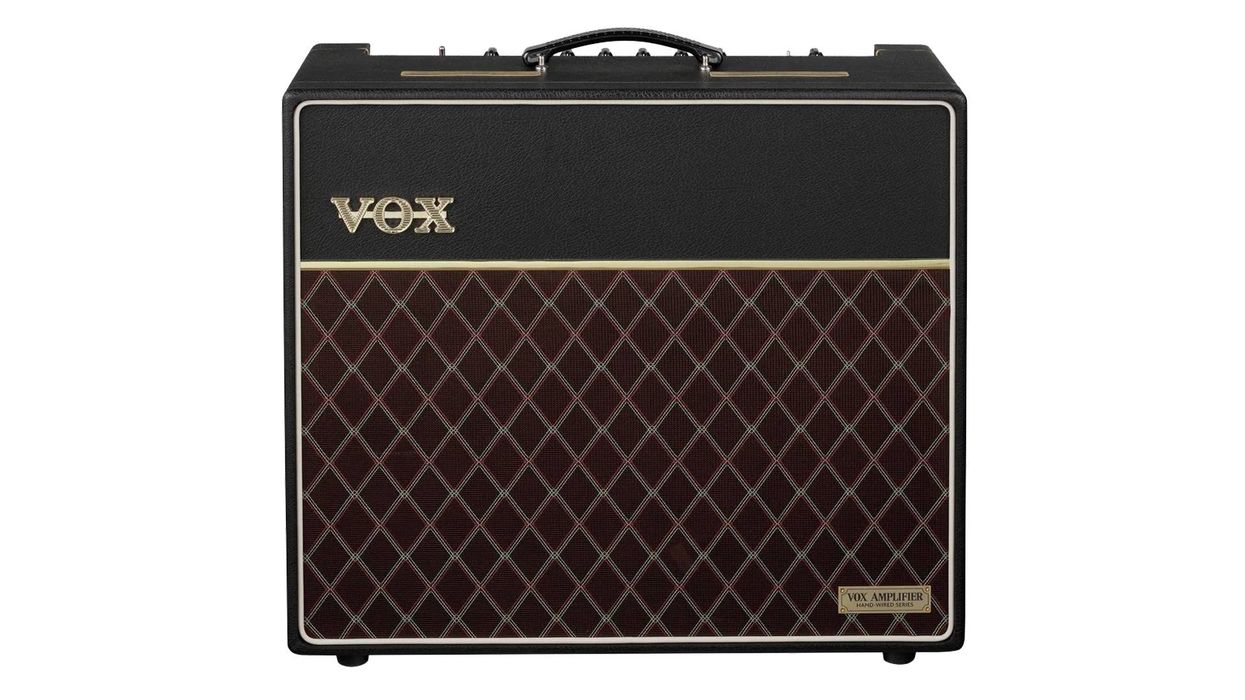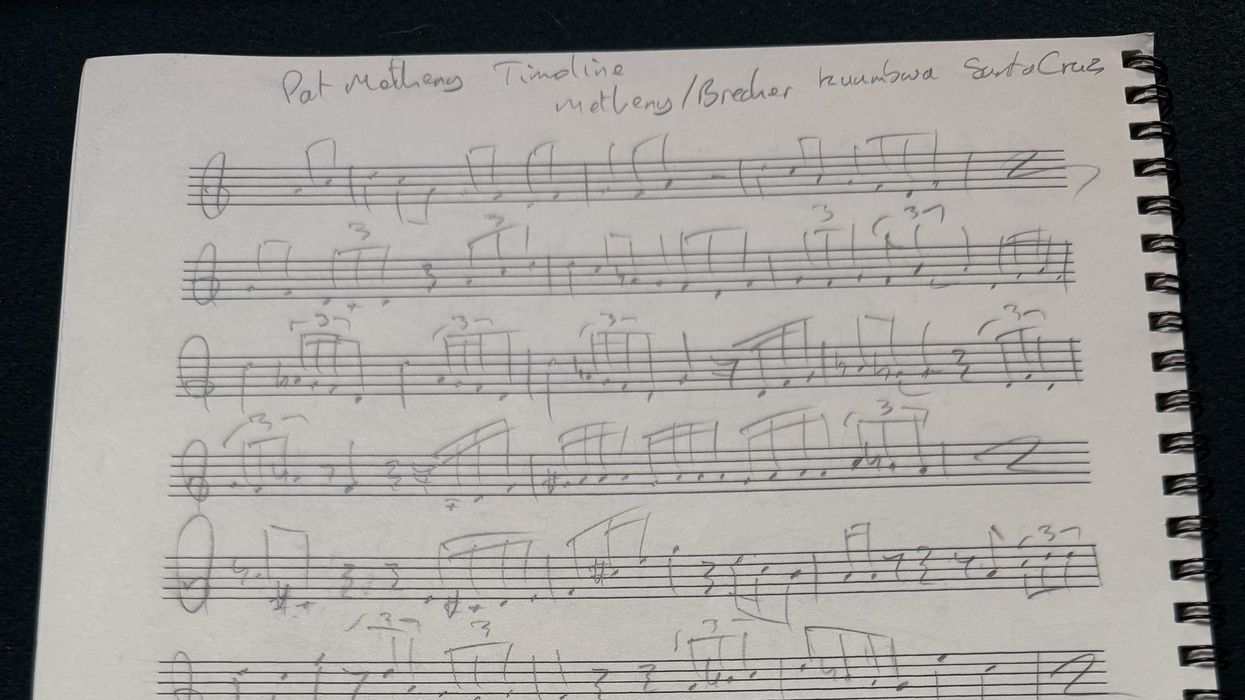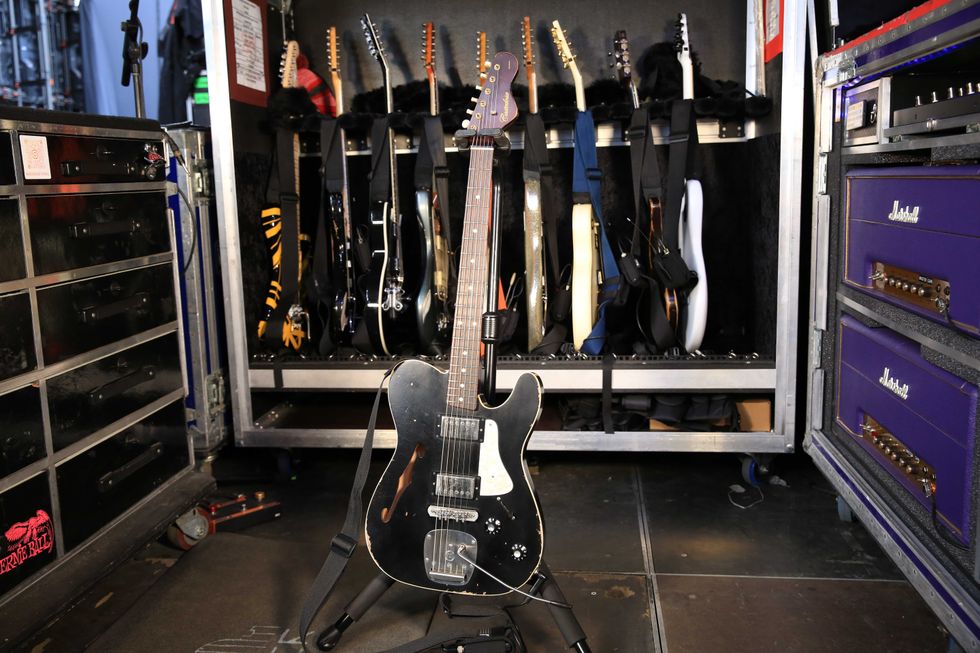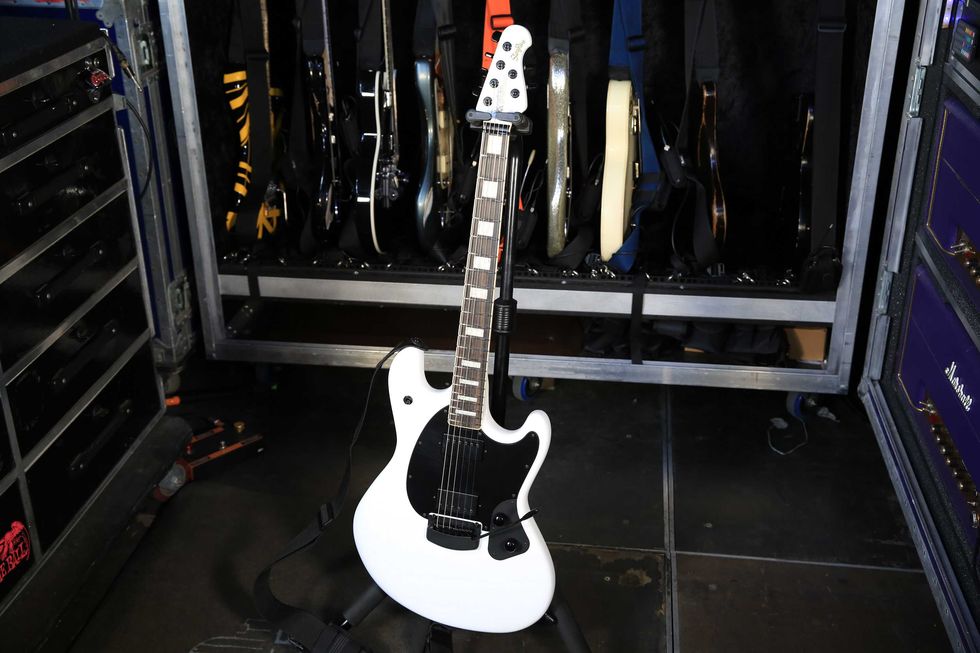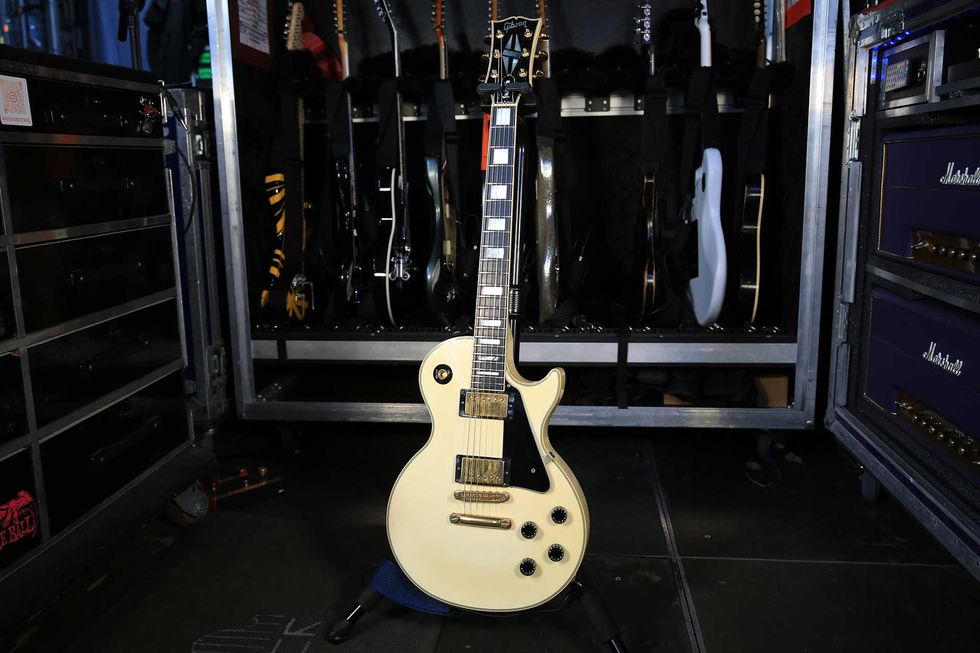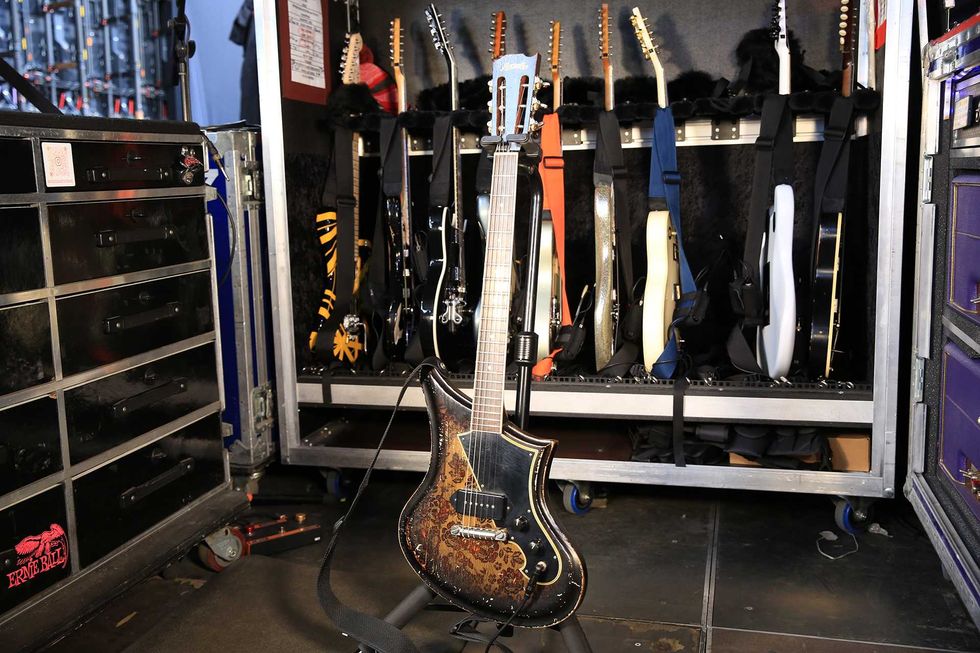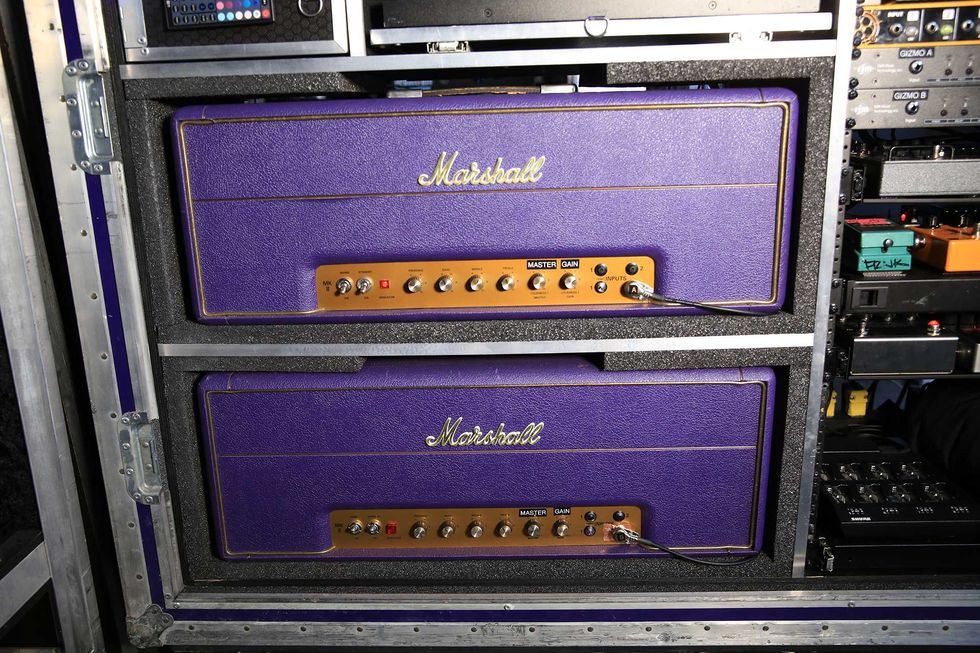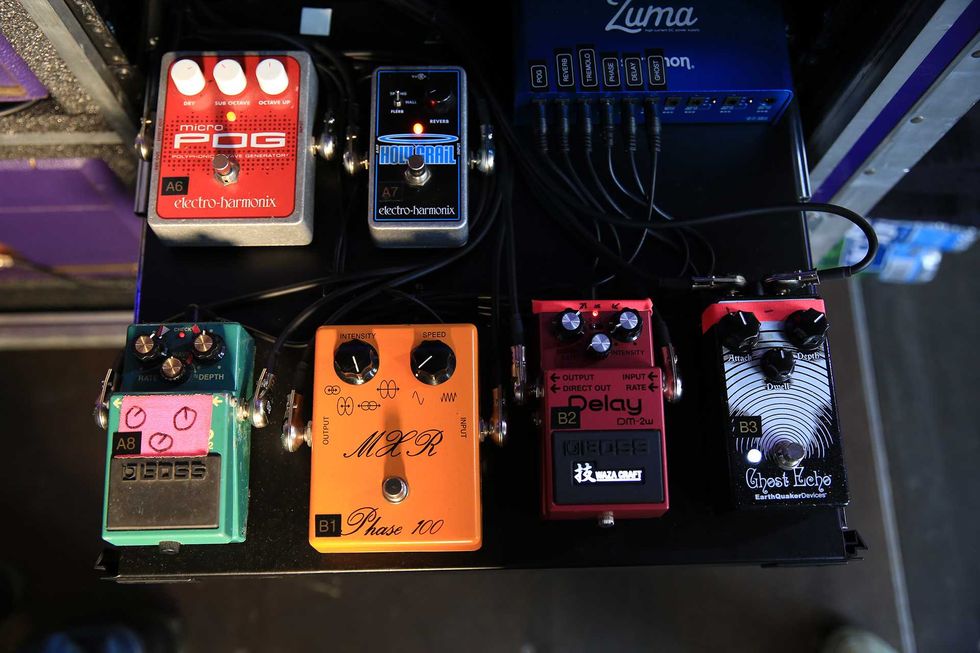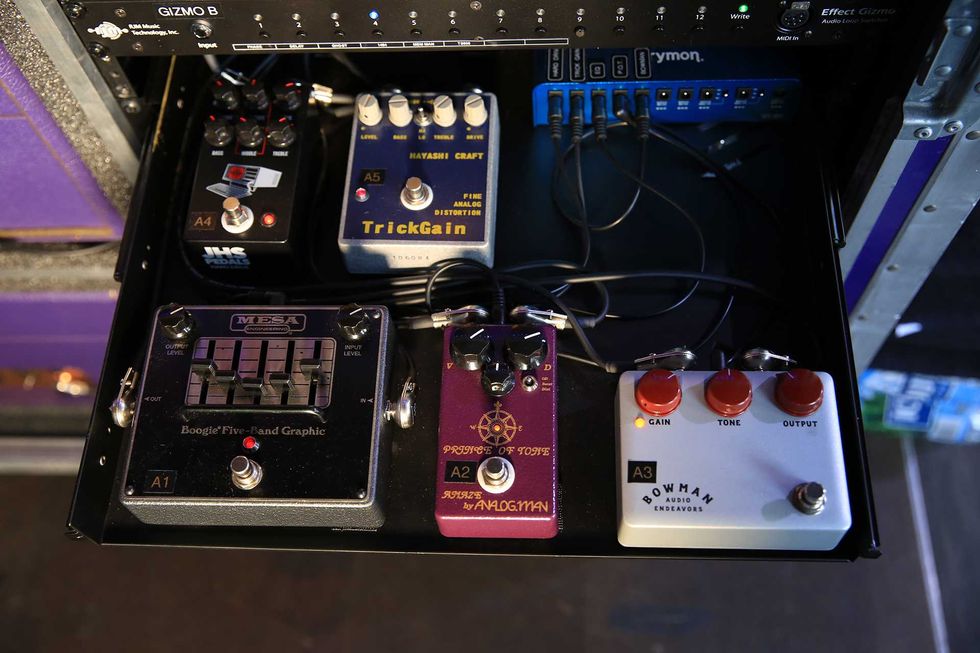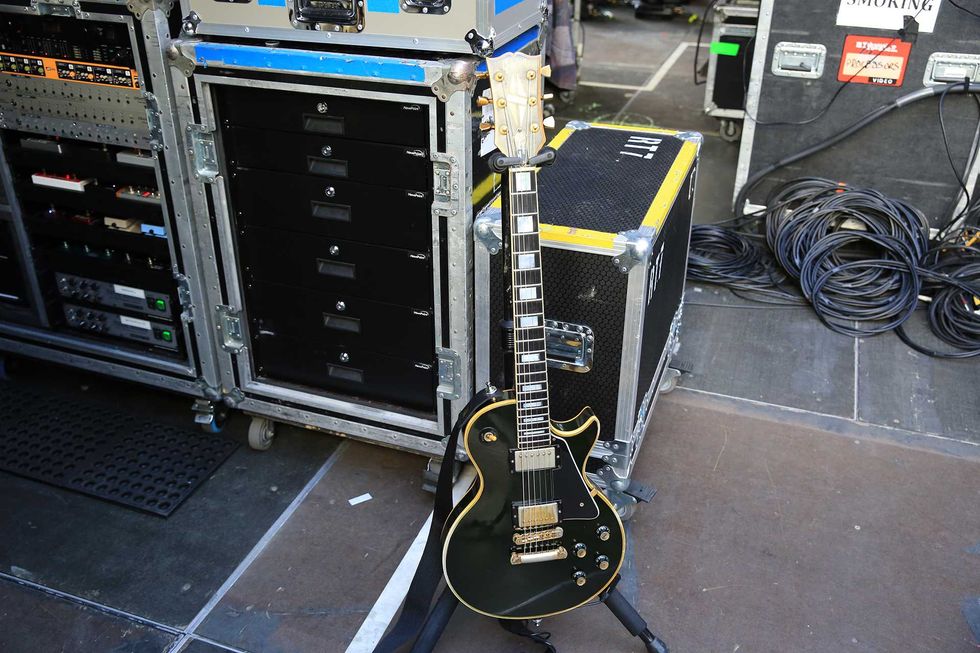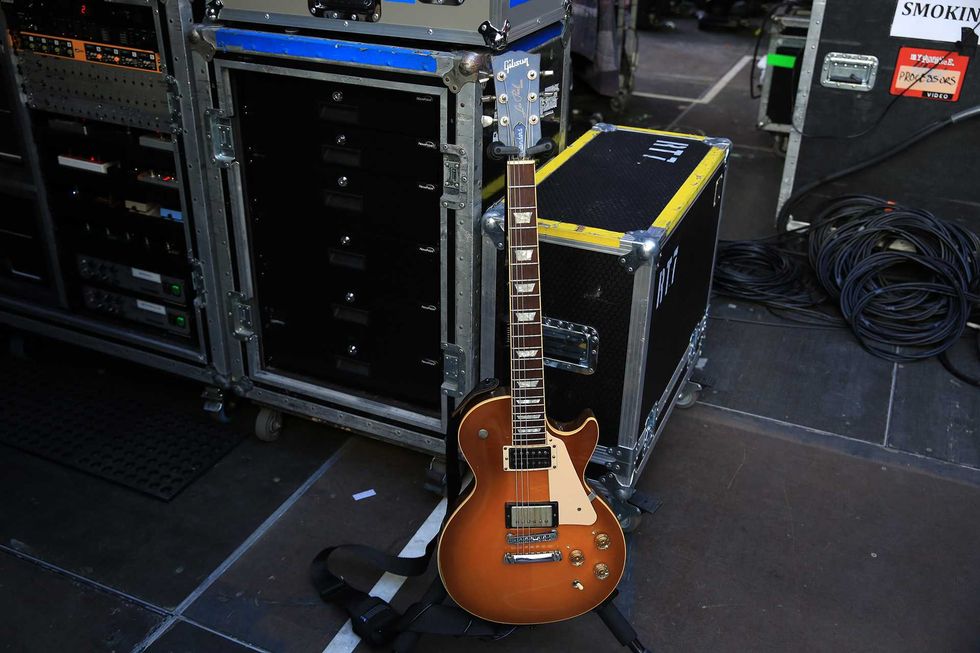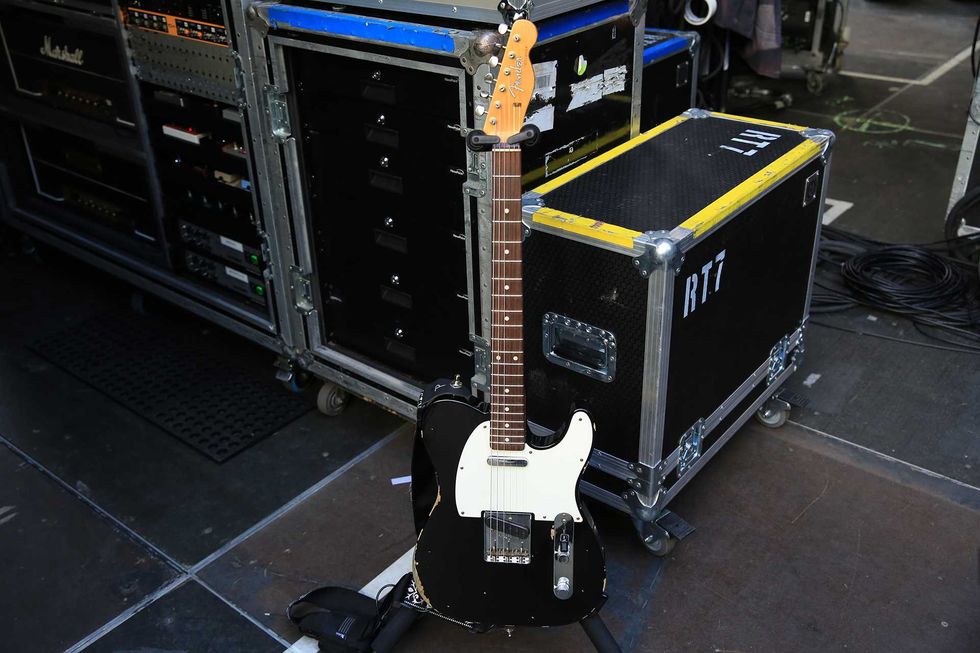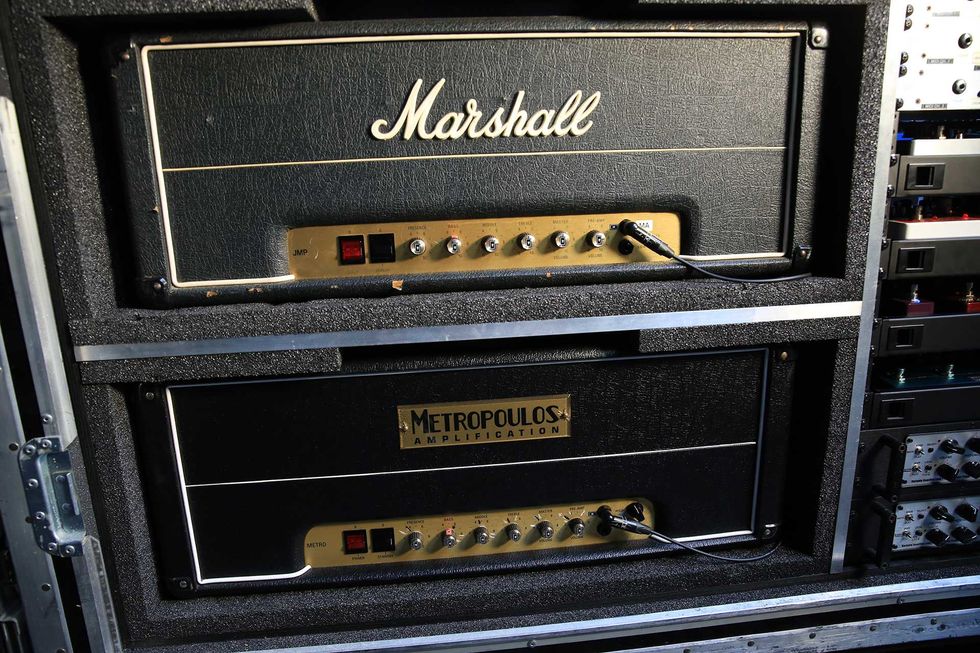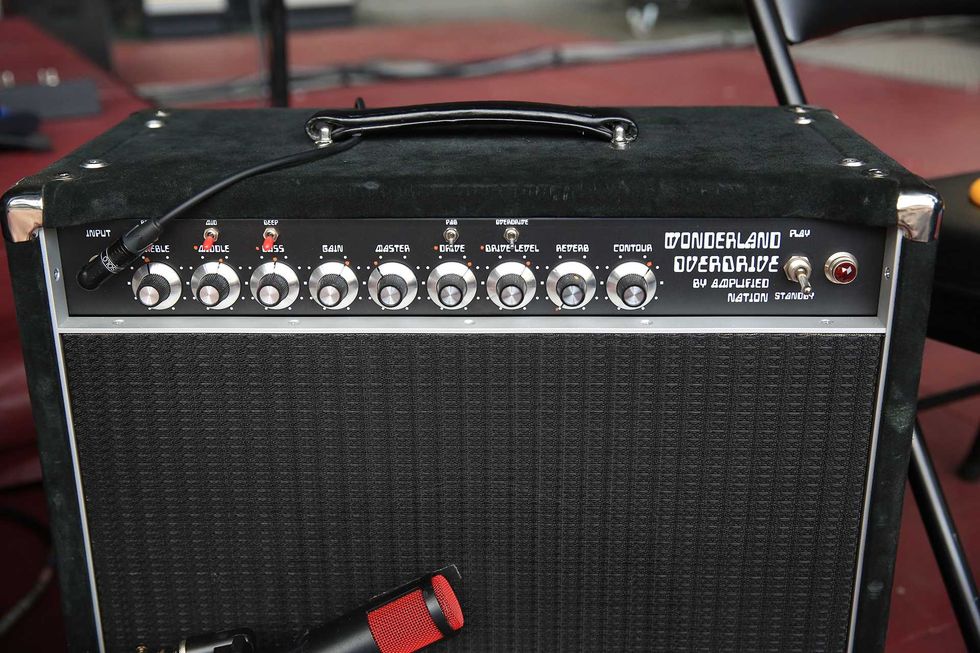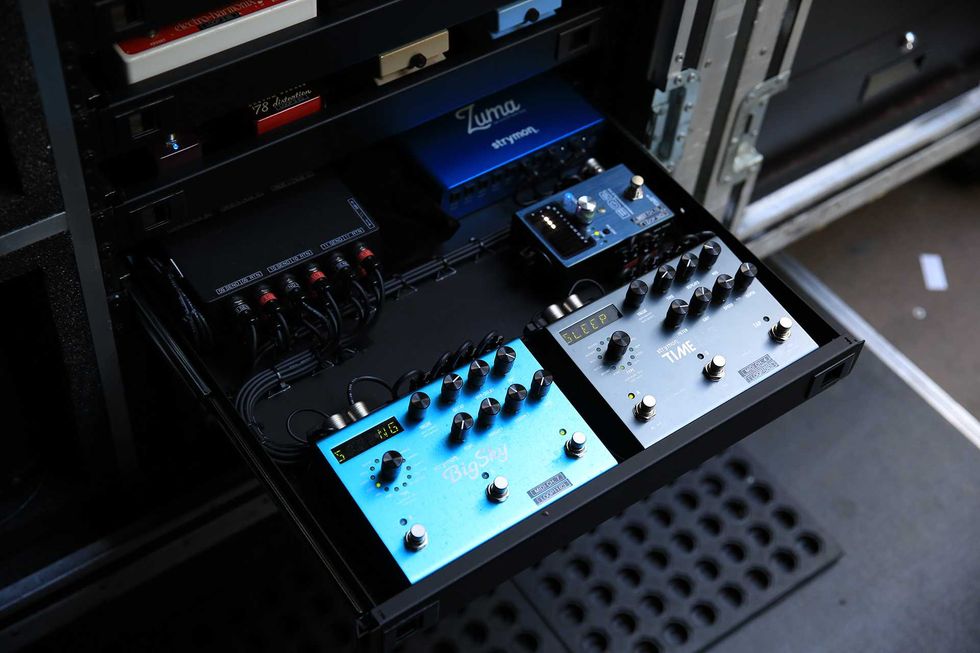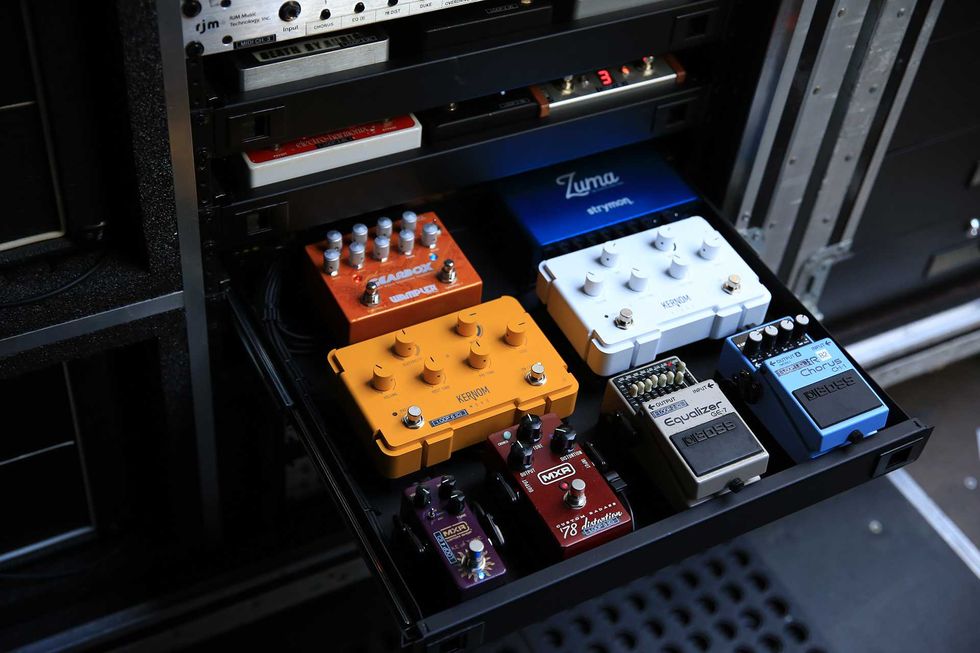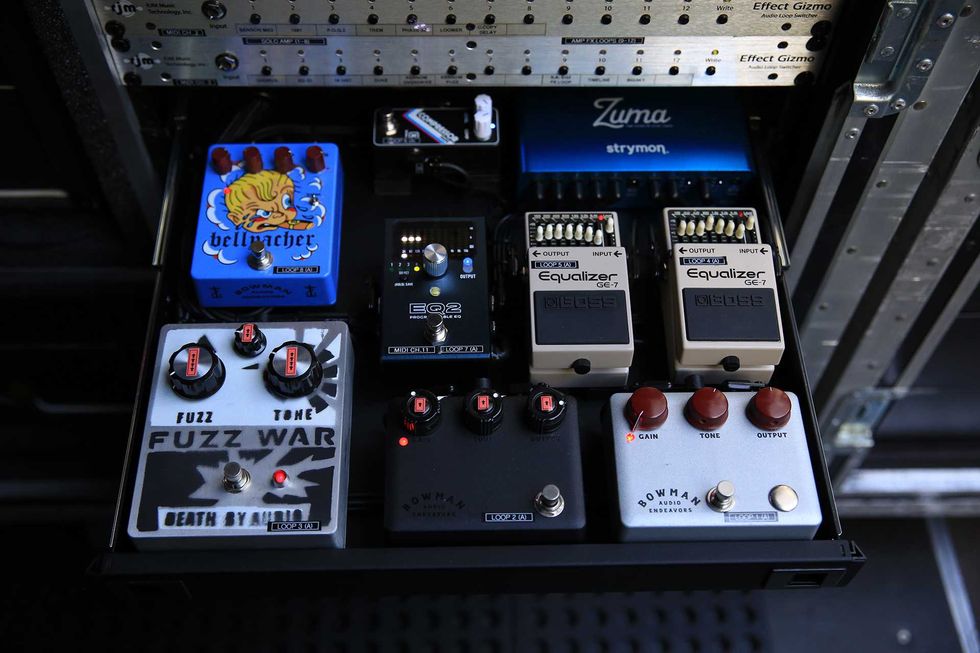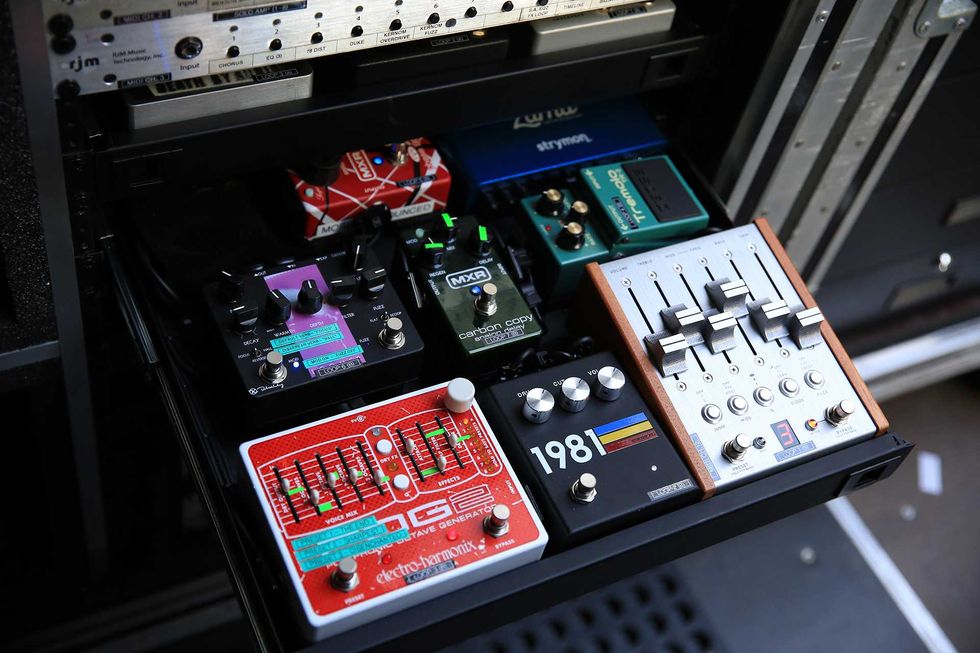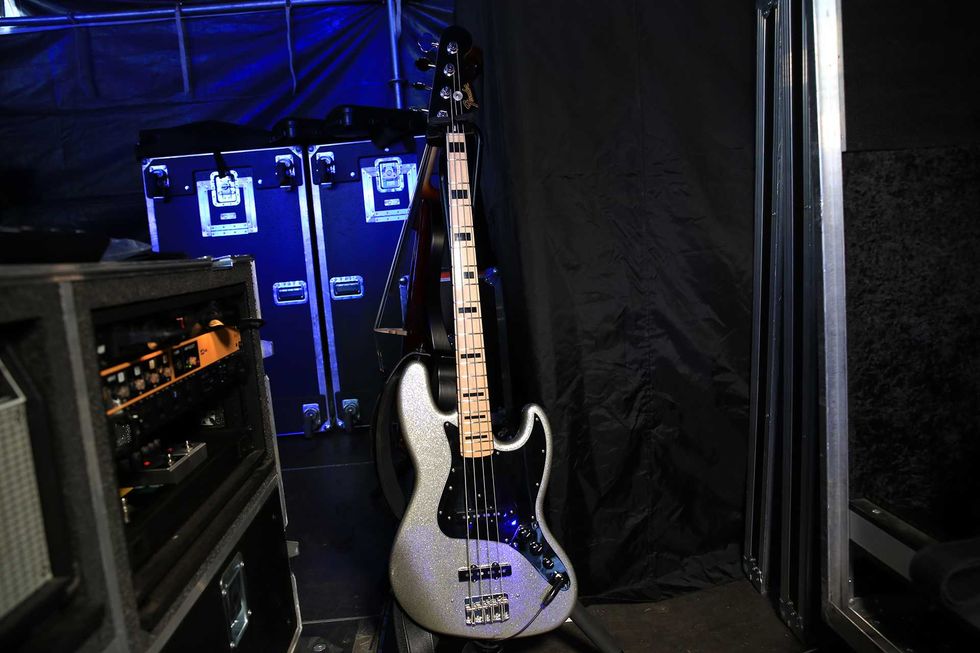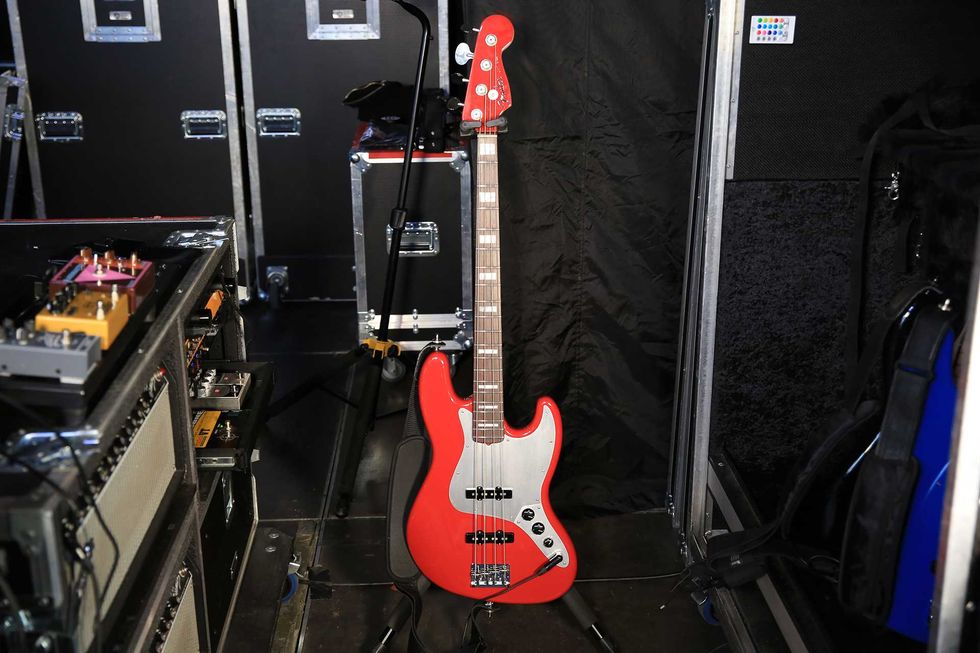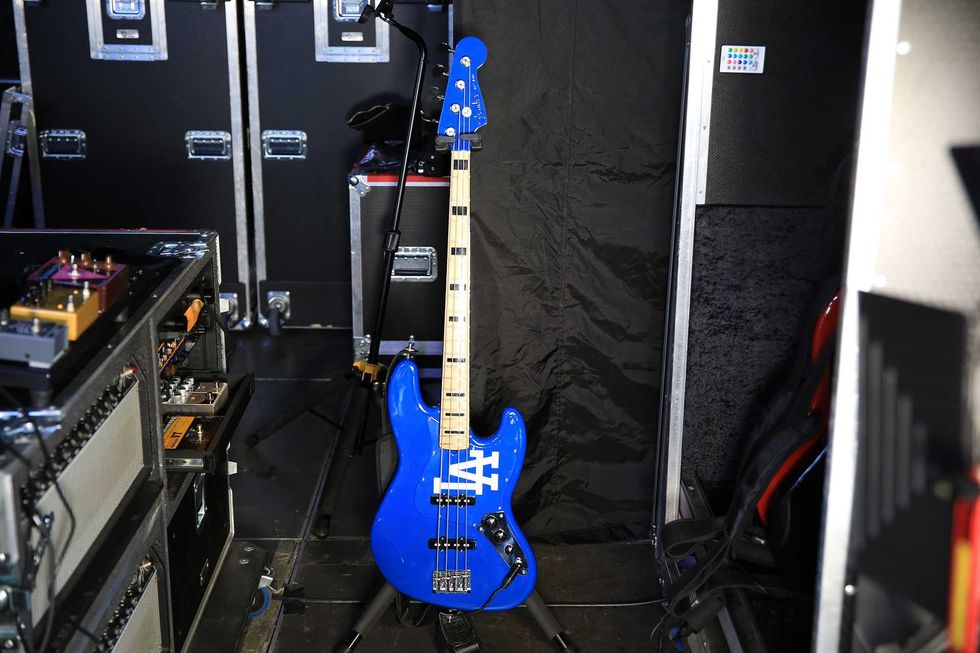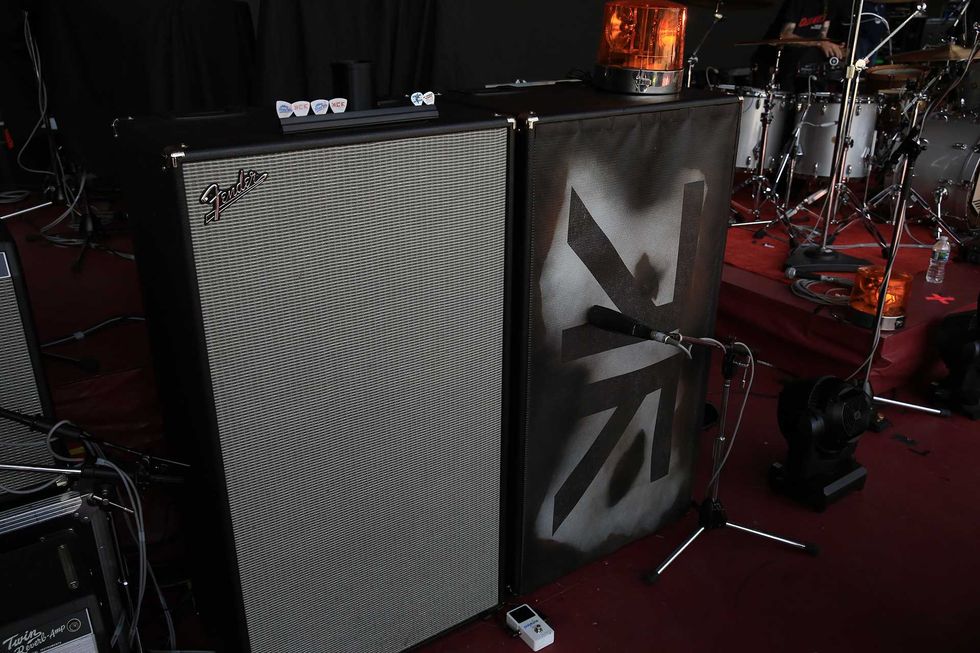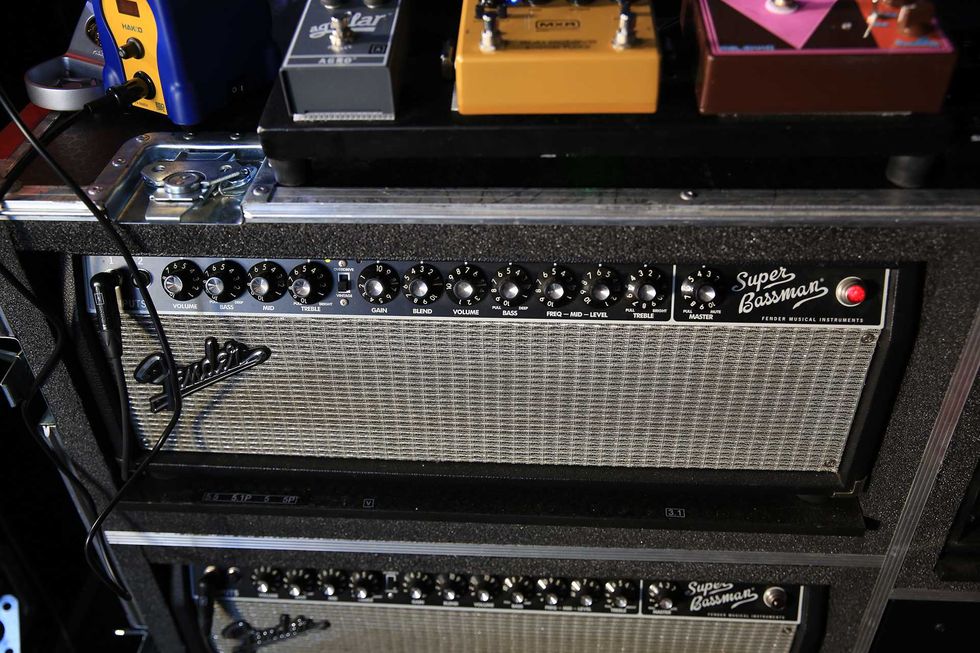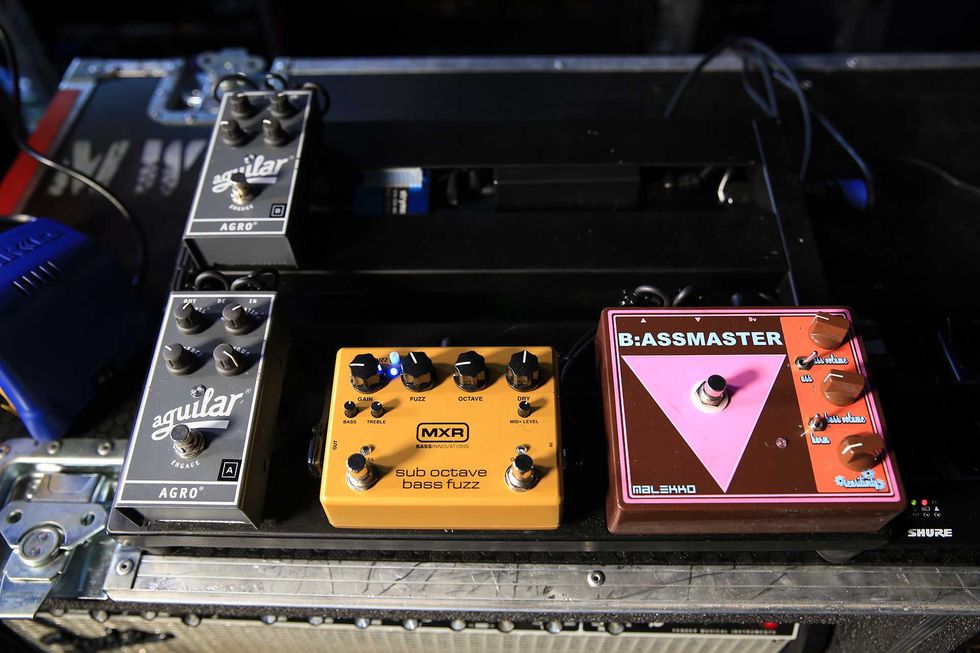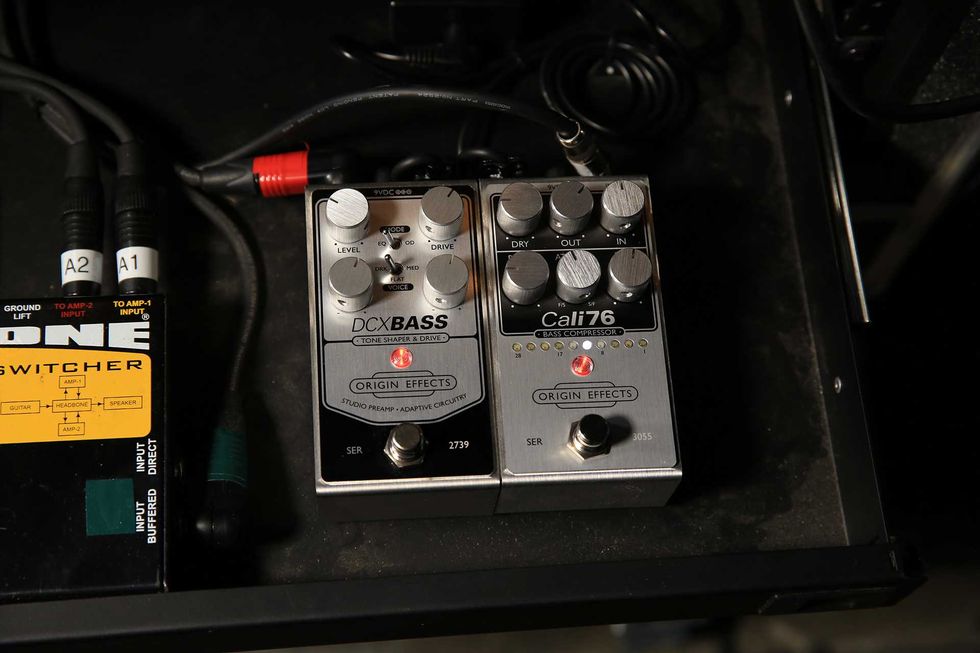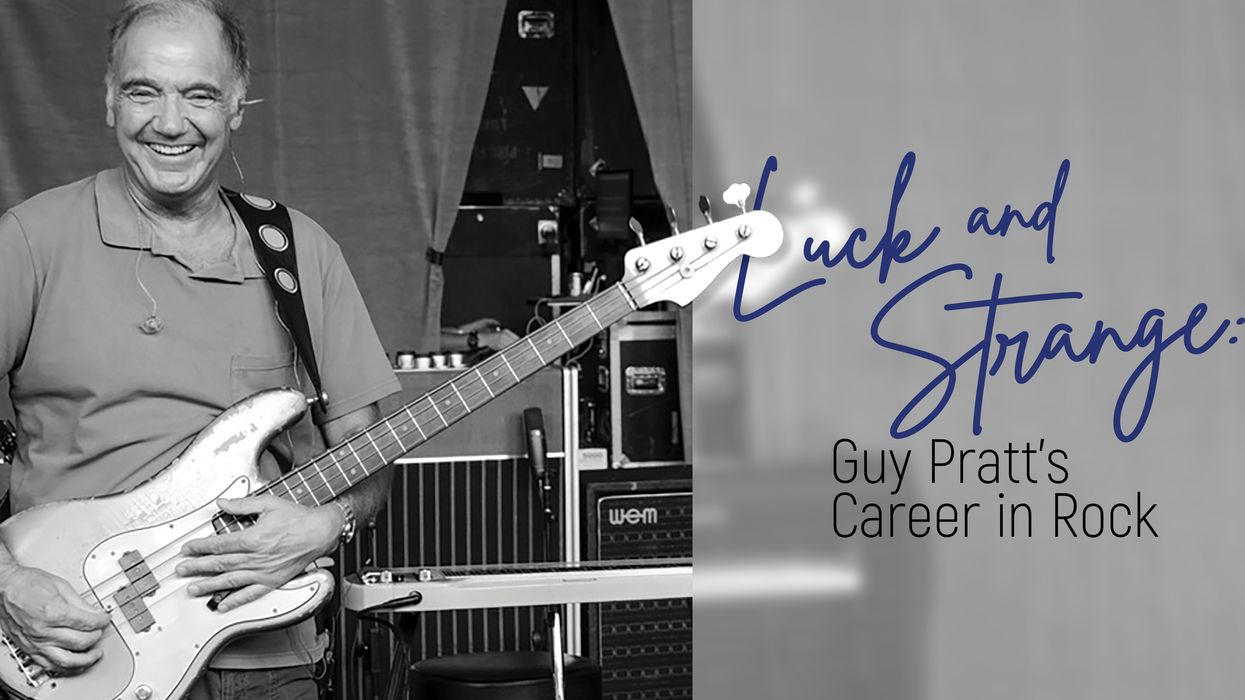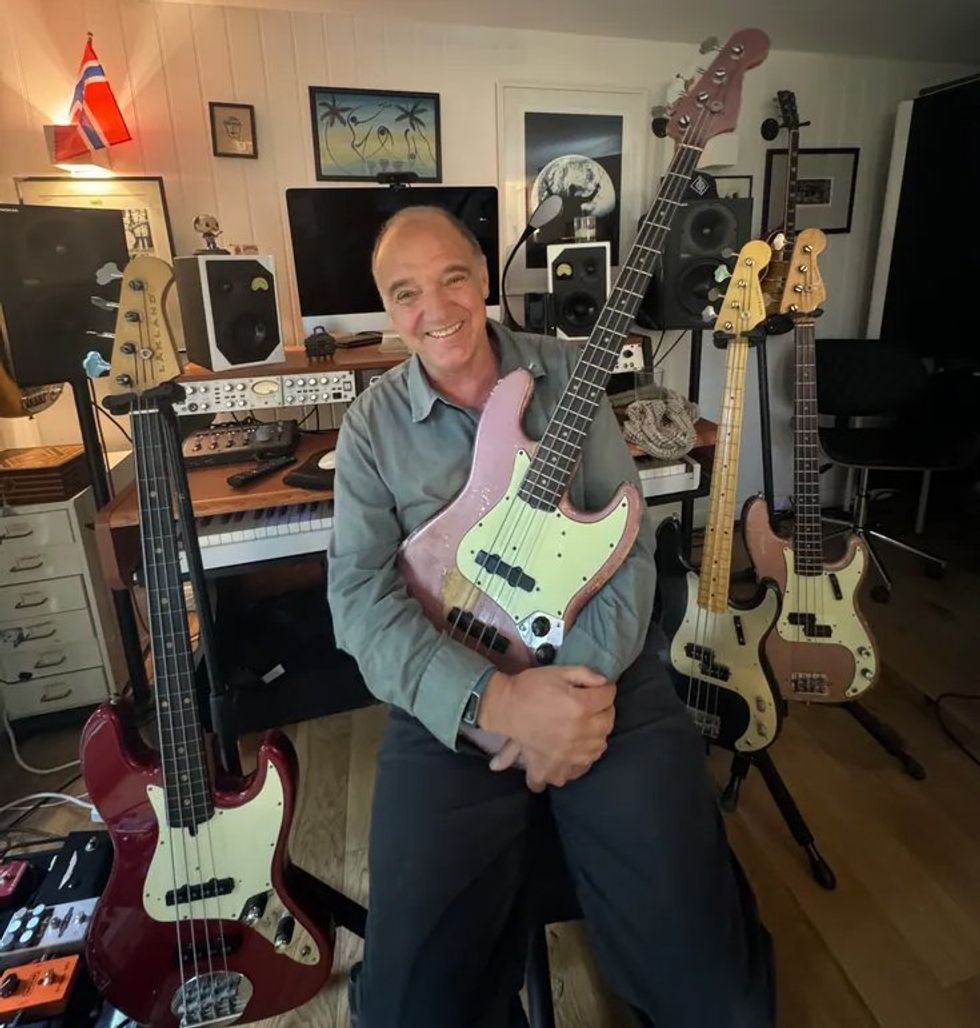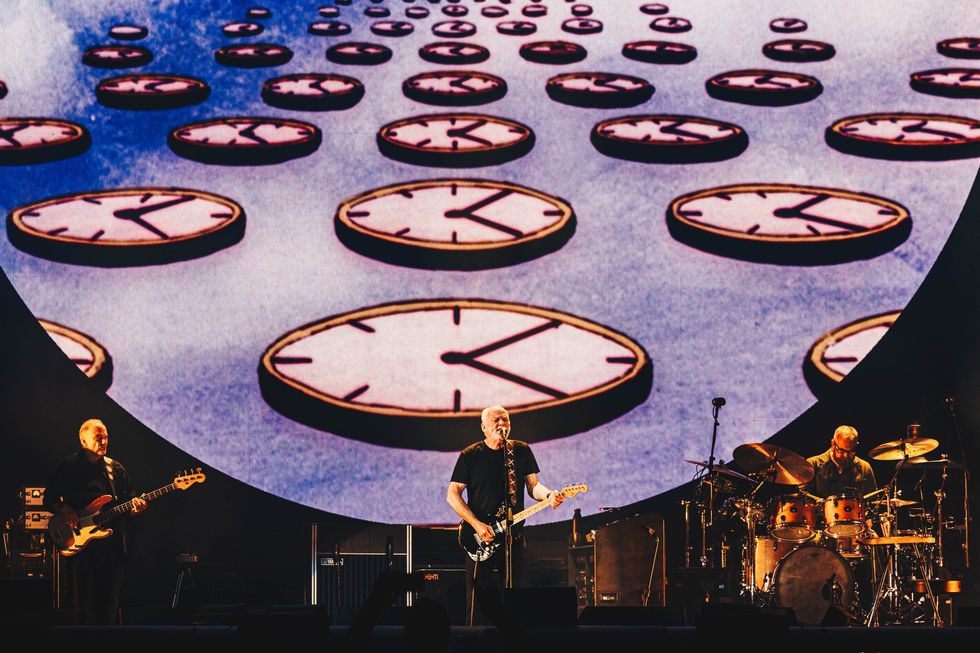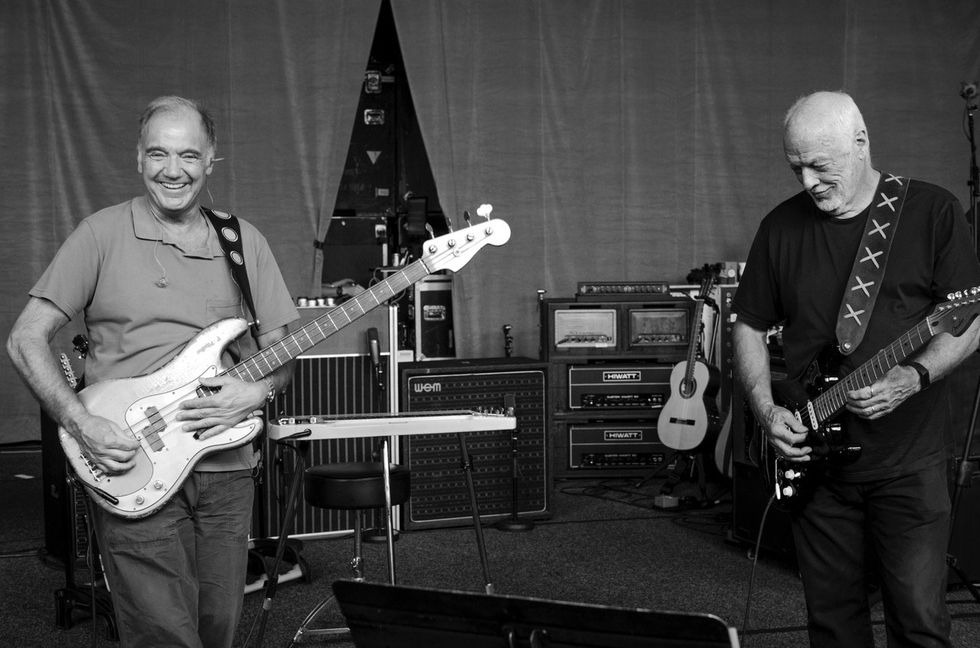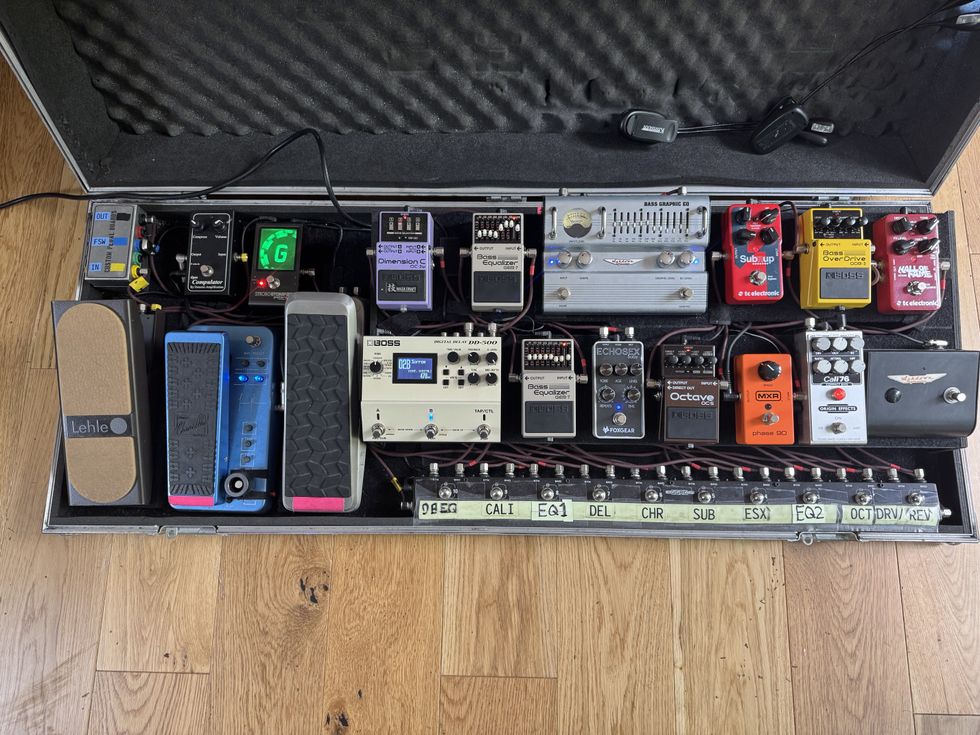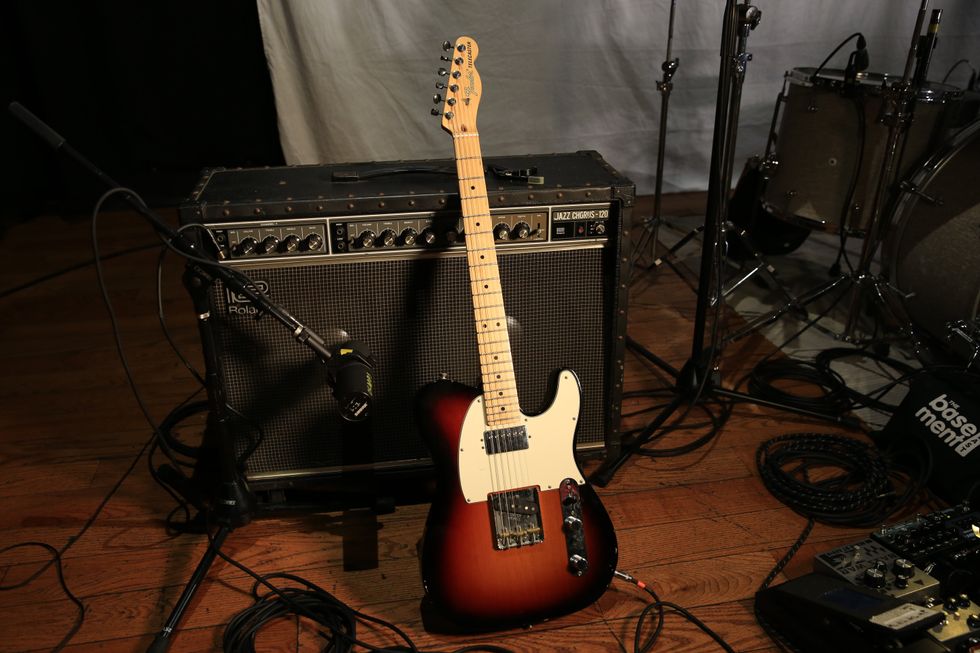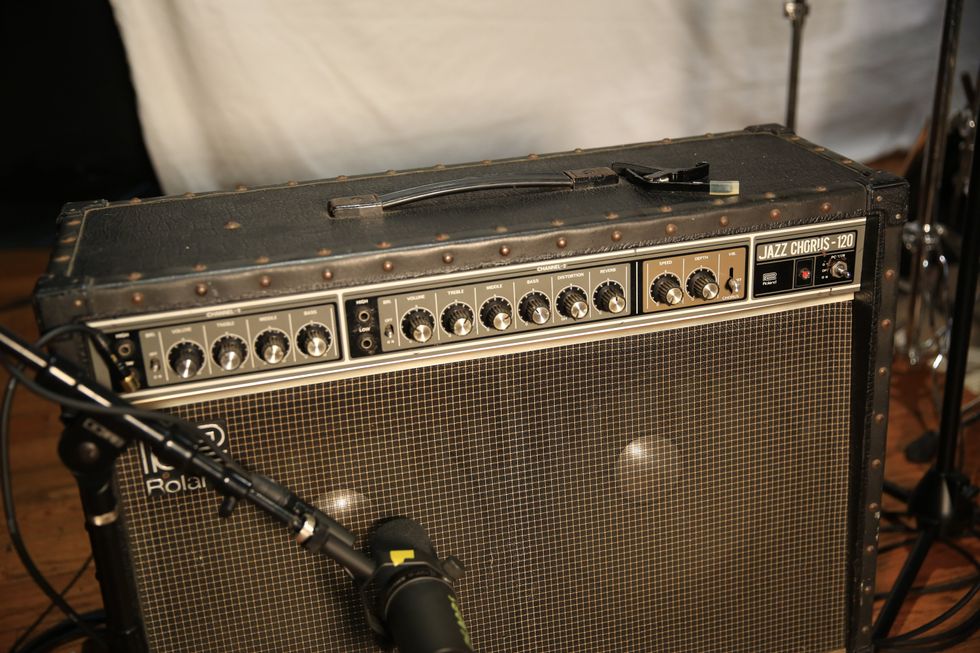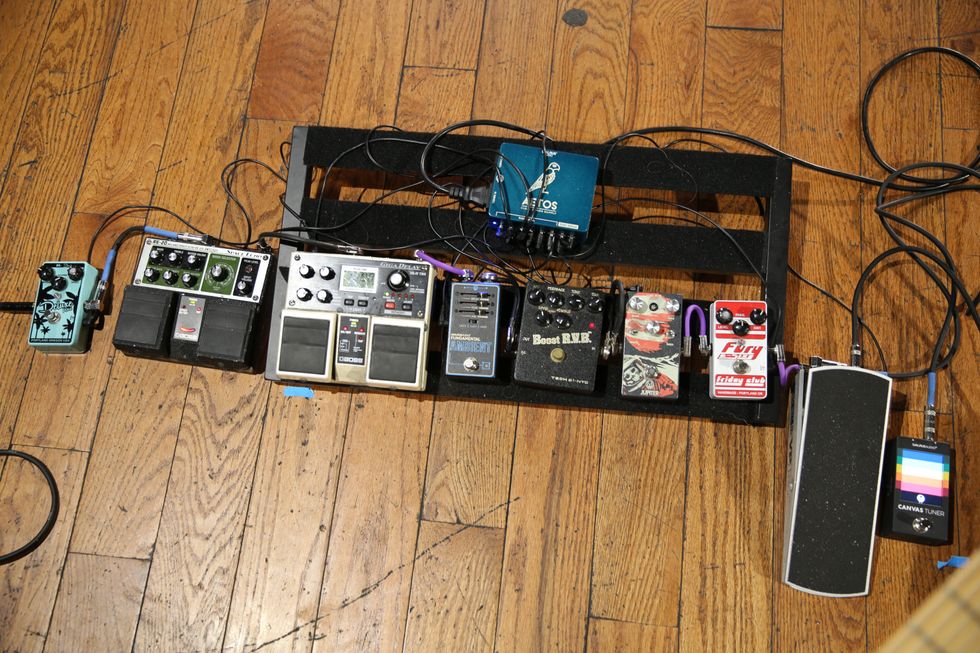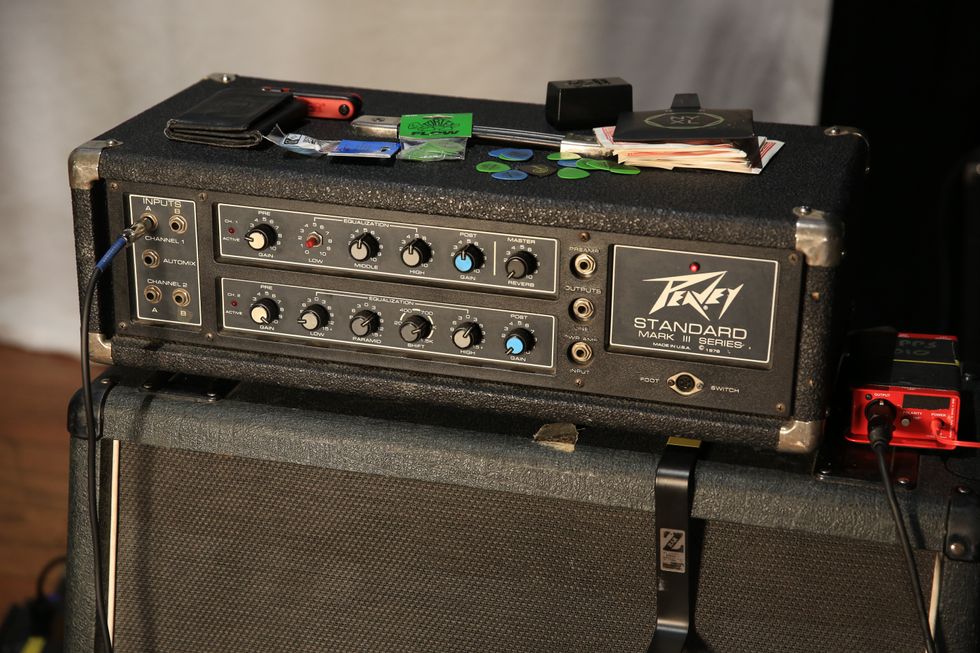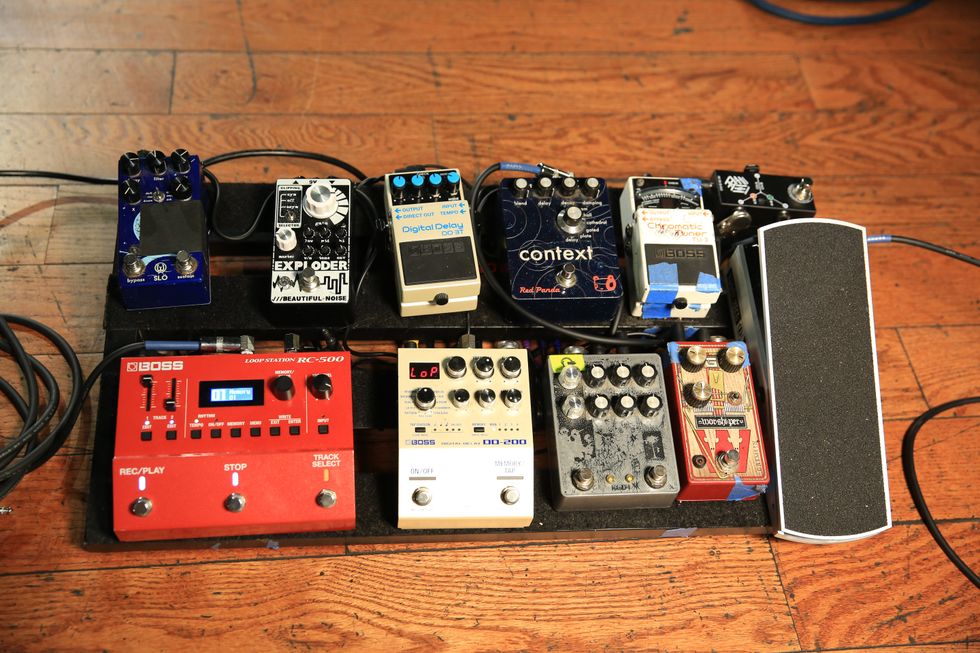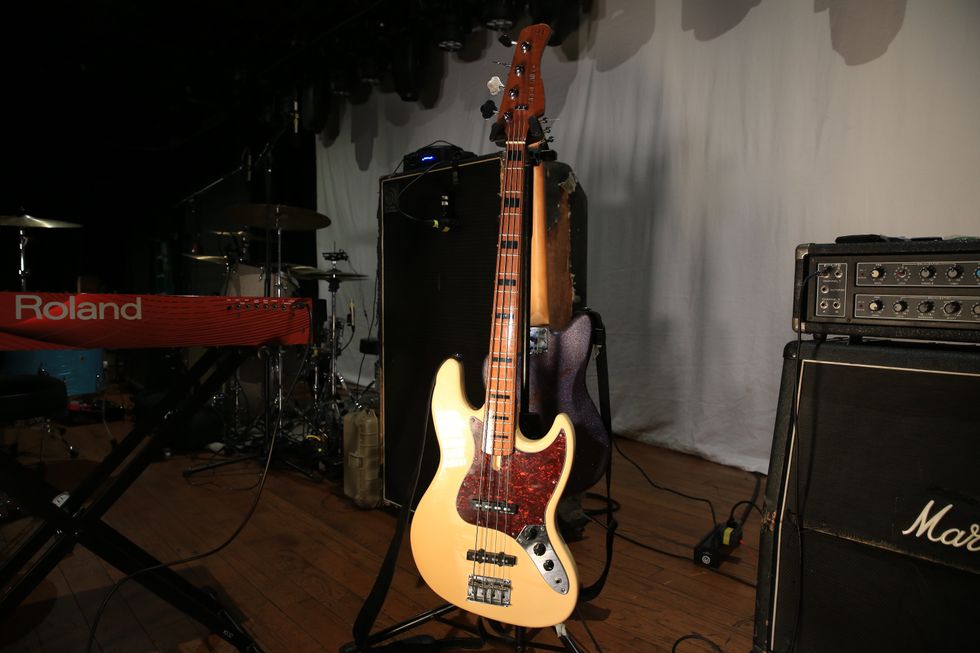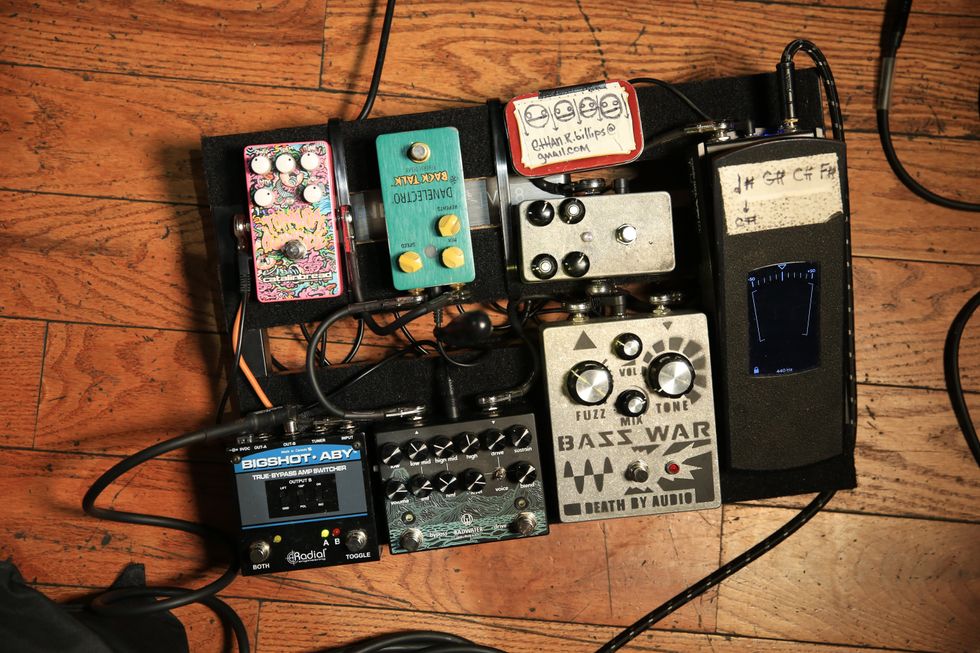Unless you've been dwelling in a cave, you've witnessed the explosion of pedals in the last decade. Our stompbox-crazy 6-string bandmates are driving this phenomenon, but it's not like bassists are immune to stompbox fever. If you've ignored this trend as a low-ender, it's time to take a quick inventory of what's available and what you need to consider when jumping into the pedal world.
The big caveat: Many of us need an entire lifetime to find our unique tone with simply the right bass, cable, amp, and cabinet. Add a myriad of effects pedals in different combinations—all of which can be used ahead of the amp or in an FX loop in serial or parallel—and you can see why it's easy to get lost or even lose the core tone you've worked so hard to perfect. A once-vibrant signal can get degraded after being run through a chain of pedals, so listen carefully to that low end.
Before we discuss one particularly useful pedal for bassists, let's categorize effects to get a better overview of the possibilities: distortion (which subdivides into several categories, including overdrive and fuzz), modulation, time-based effects, and volume manipulation. Typical modulators are chorus, flanger, phaser, and octaver, while time-based effects consist of delay and reverb. Volume manipulation happens via EQs, envelope filters, boosters, and tremolos. And as if this wasn't confusing enough, now and then someone merges several effects while claiming to have created a new category.
To see how technically challenging—and potentially confusing—today's pedals can be, let's examine what's often considered the most useful pedal for bassists: the compressor. Basically, a compressor is an automatic volume control. Bassists often use them to flatten the sonic spikes from inconsistent playing or even out the sound of different playing styles. Depending on your goals and how well you understand its functionality, a compressor can offer additional benefits.
Technically, a compressor is similar to a limiter, but there are key differences. A limiter steps in to immediately lower a signal once it reaches a certain level, while the compressor not only has an adjustable delay before it triggers, but also typically lets you control how fast and strong it reacts and how quickly it lets the volume return to normal. Setting a limiter's threshold very low will squash your dynamics, while a compressor reduces your signal's dynamics by a selected ratio without squeezing the life out of it.
Compressors come in many types: There are optical, tube, VCA (voltage controlled amplifier), FET (field effect transistor), and OTA (operational transconductance amplifier) compressors. It's hard to predict how well a compressor will work for you by simply identifying its design, so you'll have to experiment with at least a few of these technologies.
Why would you plug your bass into a compressor? One easy answer: You can increase perceived sustain, but in the real world, more sustain is something bassists rarely need. Some players might use compression to hide flawed playing skills—in other words, sound more consistent. And it works, but if you think you need this, then that's exactly the reason you shouldn't get one. Instead, spent more time developing your right-hand technique. My advice? Never use a compressor when practicing.
Depending on a specific compressor's features and how artfully you use it, you can add punch to your tone, especially with devices that offer multiband compression or the ability to blend the original signal in parallel with the compressed output. And as with the Kemper Profiler amp, digitalization is rapidly altering the pedal world. For example, one would think that with its single-knob design, the tiny TC Electronic SpectraComp bass compressor is a limited, but easy-to-use device. But that's until you start editing all the parameters this 3-band compressor offers through TC's TonePrint app and discover that it's simultaneously doing a multitude of things with that single knob.
Today, it's rarely enough to have a fat tone and solid groove. Dealing with rapidly evolving technology is a part of playing bass in the 21st century, whether we like it or not. We'll explore this idea in future columns.


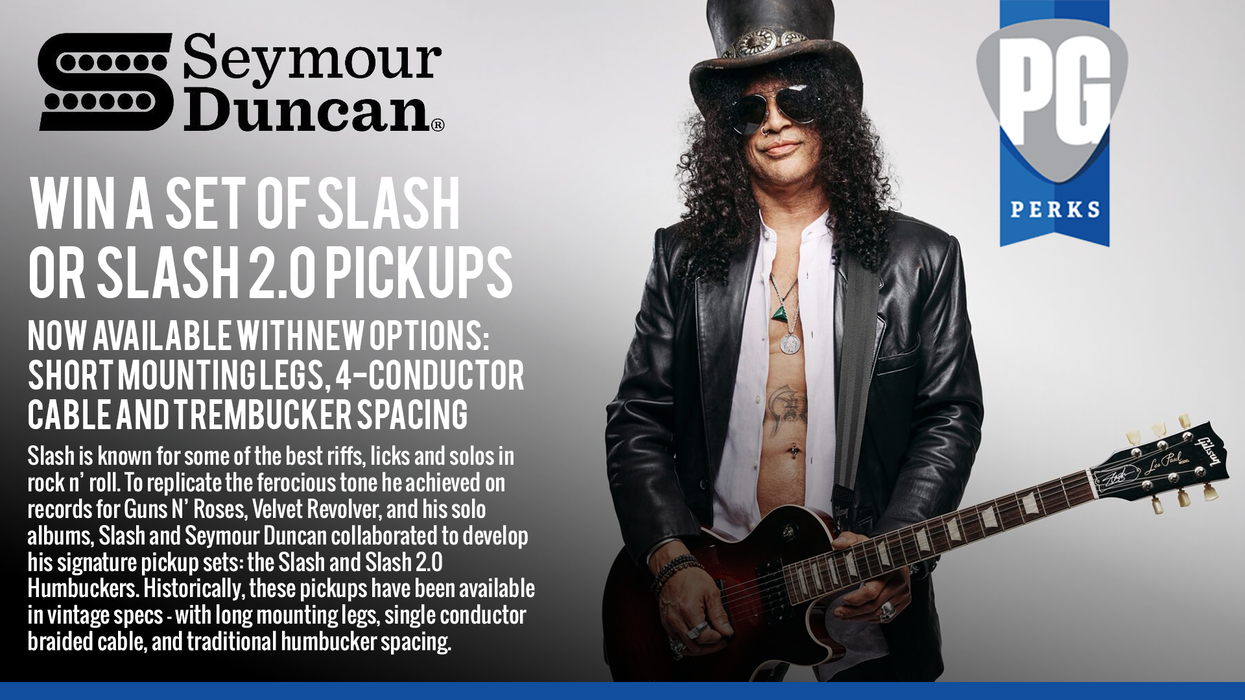
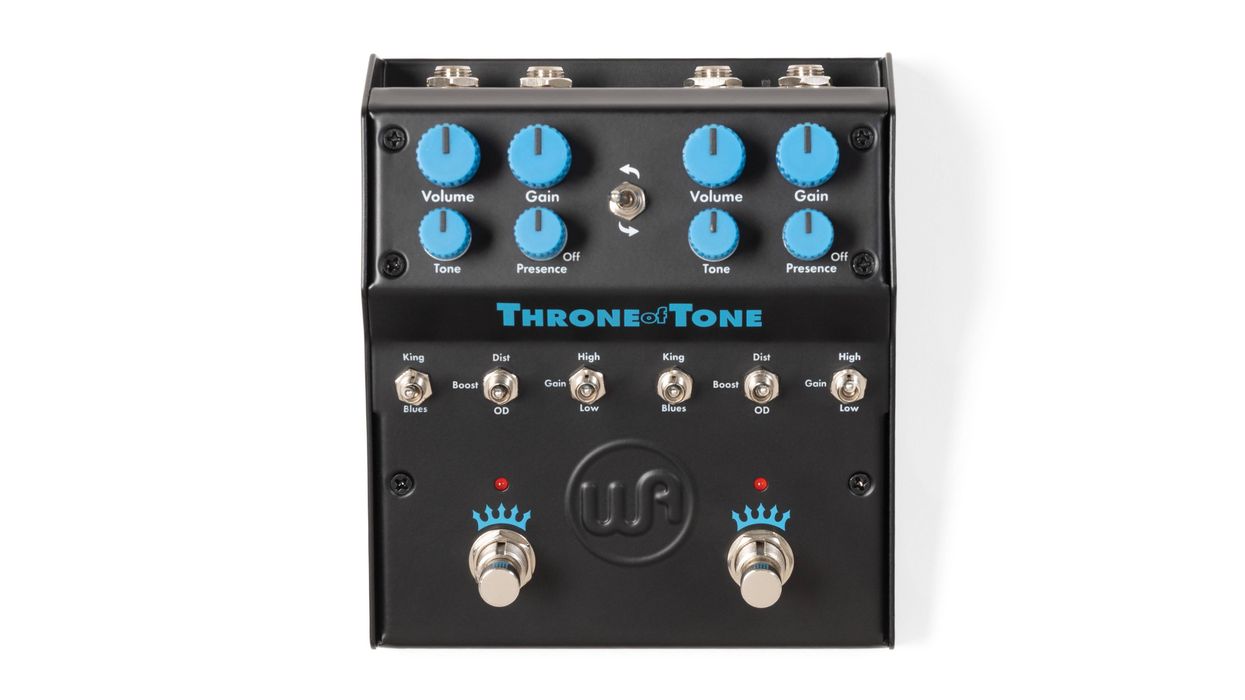
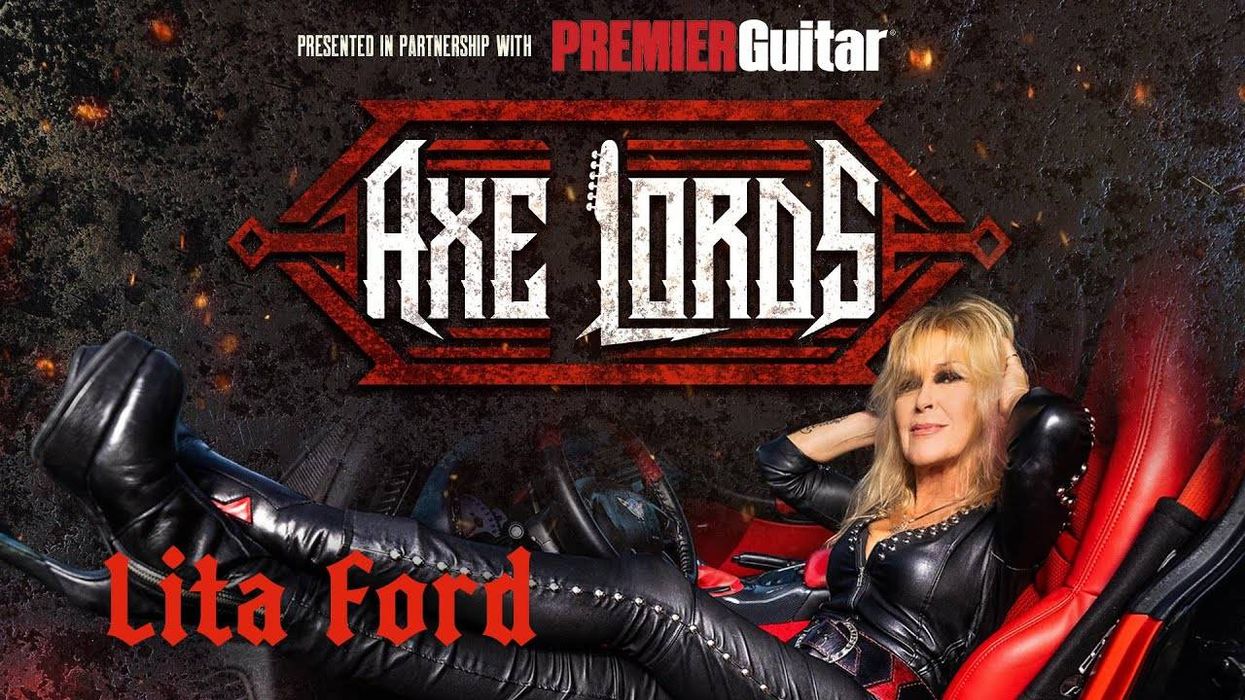

![Rig Rundown: AFI [2025]](https://www.premierguitar.com/media-library/youtube.jpg?id=62064741&width=1245&height=700&quality=70&coordinates=0%2C0%2C0%2C0)












 Shop Scott's Rig
Shop Scott's Rig
